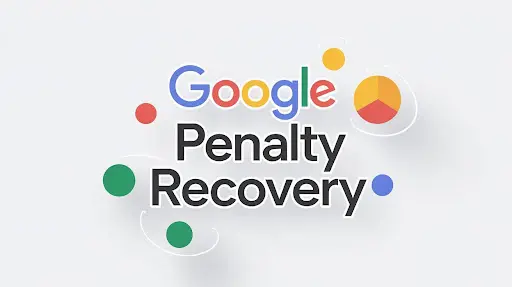How to Avoid Keyword Stuffing

Keyword stuffing can damage your rankings, irritate readers, and impact your entire SEO strategy. Yet, in a moving pursuit of ranking better on search engines, you would need to understand precisely what keyword overloading is and how to avoid it. In this piece, the blog will demystify the concept and provide examples of keyword spamming and other methods of sense in using keywords naturally.
What is Keyword Stuffing?
Definition of keyword stuffing: This simply is the use of too many repetitions of a particular word or phrase on a webpage to artificially influence rankings. It is true that adding keywords to your content is very important to any SEO campaign, but the incorrect addition can work against the SEO effort.
Why Is Keyword Overloading Bad?
Keyword overstuffing can backfire as it may seem like a quick way to rank higher; here's why:
- Search Engine Penalties: Google will penalize your site for stuffed keywords, resulting in a fall in rank or even removal from search results.
- Poor user experience: A page full of stuffed keywords is hard to read and impossible to understand, so visitors will shy away from it.
- Damaged reputation: Visitors can quickly lose trust in your content if it feels artificial or forced, which may be perilous for the very best brand credibility.
Keyword Stuffing Example
You will be able to avoid keyword overloading by knowing its examples. Here's a common example of stuffing keywords:
Example of keyword overloading:
"We offer the best web design services. Our web design services are affordable. Contact us today for web design services if you need web design services."
This example wastes your phrase "web design services" unnaturally multiple times, thus creating a reading experience that is horrible and penalized by search engines.
Types of Keyword Stuffing
- Visible Keyword Stuffing
This is probably the most overt form of keyword spamming where, for instance, the keywords would appear repetitively inside all the visible text. Keyword overloading often breaks the natural flow of the text and makes the content sound unnatural in many cases.
- Example: "We provide the best keyword spamming example to show you how keyword spamming can be bad for keyword spamming SEO."
This is an example of keyword spamming. It uses the keyword "keyword spamming" in an unnatural way. Its readability and user experience are really brought down.
- Concealed Keyword Stuffing
Concealed keyword overloading is adding keywords in ways that aren't seen by the users but are picked up by the search engines. This could be done by making the text the same colour as the background, using very small font sizes, or placing keywords off-screen using CSS.
- Example of hidden keyword overloading: Keyword overstuffing like "cheap SEO services" repeated multiple times in white writing that is placed on a white background.
This can be detected by search engines, including Google, and sites will have to face penalties for applying this approach.
- Meta Tag Keyword OverStuffing
This is when meta tags in a website perform keyword overstuffing, as is the case when keywords repeat unnecessarily in the title, meta description, and meta keyword tags. Although meta keyword tags are less significant in current SEO, overloading them still incurs penalties.
- Alt Text Keyword OverStuffing
Another area where SEO keyword stuffing may appear is in the use of alt text for images. Instead of using meaningful alt text for images, some sites will stuff as many keywords as possible into the alt text. This hurts not only their SEO but also their accessibility for users whose way of working relies upon screen readers.
- Anchor Text Keyword Stuffing
This is the text you have linked through any web page of your site. Furthermore, Most websites repeat keywords in anchor text as opposed to using natural phrases. Repeating keywords this way can result in penalties due to keyword overloading.
How to Avoid Keyword Stuffing
- Write in Natural Language
The best way of avoiding keyword overstuffing is to write to your readers, not to the search engines. Make clarity and readability a priority over trying to stuff as many keywords as possible. Moreover, keywords should fit your content smoothly.
- Use Synonyms and Variations
There is repetition of one keyword; use synonyms or related phrases to avoid keyword overstuffing. For example, instead of saying the same keyword repeatedly, like saying "keyword overloading," then that can also be rephrased using terms such as overusing keywords or keyword overloading.
- Maintaining a healthy keyword density should be your goal.
Keyword Density is the term used to refer to how often your keyword appears in your document or material relative to the use of words in it. Generally, a keyword density must fall between 1%-2% in most cases. For this reason, you will not overload the page by using several occurrences of the same term.
- Use Long-Tail Keywords
Using long-tail keywords can help you avoid keyword stuffing. Moreover, These longer, more specific phrases provide variation in your content and prevent repetitive keyword use.
- Write Naturally, Add Keywords Later
One good way of avoiding keyword phrase stuffing is to write your content naturally, then go back and add your keywords where they will fit smoothly. That way, it flows well, and it does not contain the repeat words that stuff the content.
- Keywords in Strategic Places
Instead of piling keywords into all the content, use them strategically at the best places, such as:
- Headings
- Meta descriptions
- URL slugs
- Alt images
- The first paragraph of your content
Checking for Keyword OverStuffing
Balance this by frequently reviewing your content to ensure that you're not stuffing keyword phrases. Utilize tools such as Google Search Console or other third-party SEO tools to track how many times you're using keywords, which will alert you to possible overloading of a word or phrase.
User-Focused Writing vs. Search Engine-Focused Writing
The best way to avoid keyword stuffing SEO is by giving importance to the user experience. You should focus on content that can answer questions and provide value. Well-written content that delivers information will rank well naturally without the need to stuff your content.
Tips for Natural Keyword Integration
- Distribute Keywords Thoroughly: Do not cluster keywords in one section. Spread them out evenly throughout so that the text is easily readable.
- Keywords in Subheadings: It is possible to have natural placement while improving the structure of the content by including keywords on the subheadings.
- Enticing Meta Descriptions: Meta description allows the use of keywords naturally while stating the purpose of the page.
- Use Keywords as Anchor Text: Instead of repeating phrases or sentences in the body text, consider using keywords as anchor text of a particular internal link.
Conclusion
Thus, Keyword Overloading is one of the bad things according to SEO tactics. Focus on giving your readers value by using synonyms and spreading your keywords throughout the page.For the best tips on optimizing your website's SEO, feel free to contact Try Web Design for assistance, the best web development company in the US.




